Giochi dell'Oca e di percorso
(by Luigi Ciompi & Adrian Seville)
(by Luigi Ciompi & Adrian Seville)

|
Giochi dell'Oca e di percorso
(by Luigi Ciompi & Adrian Seville) |

|
 |

Torna alla ricerca giochi (back to game search) |
 |
| Pyramid (The) of History | ||
| Sallis' New Tee-Totum Game The Pyramid of History by the Author of Why? What? And Because. TH Jones Del. Et Litho. | ||
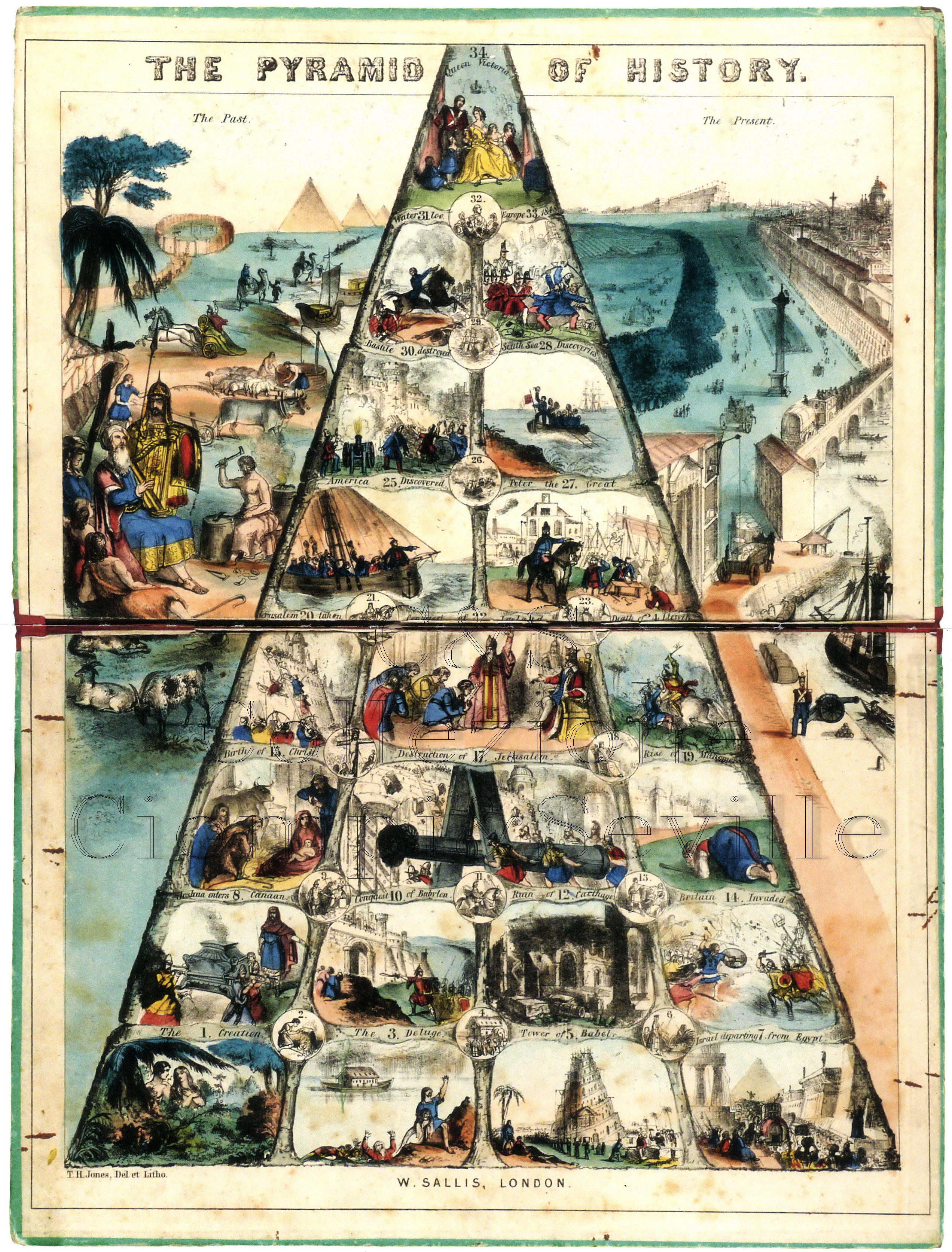 |
Versione stampabile
 |
Invia una segnalazione

|
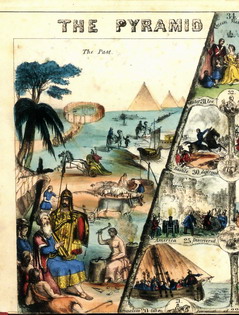 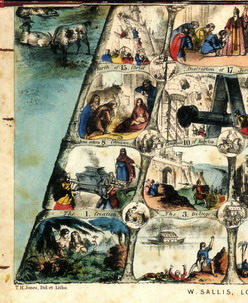 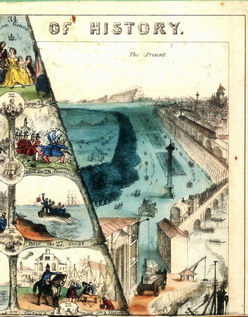 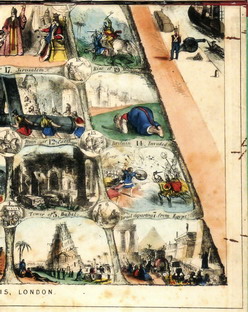 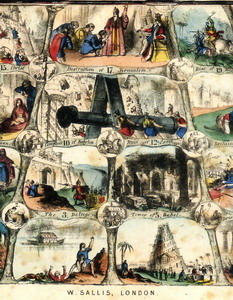 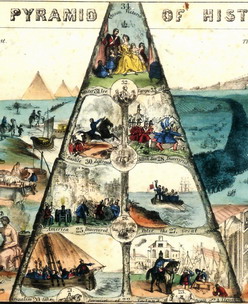 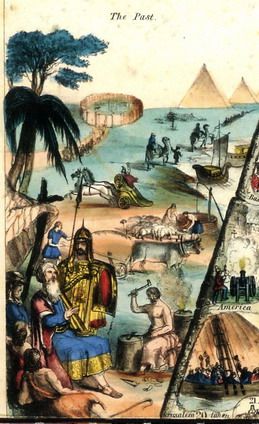 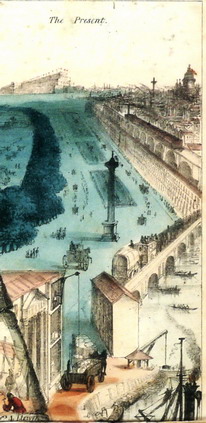 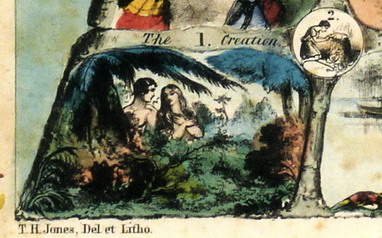 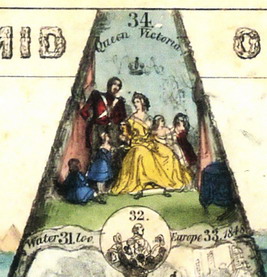 |
primo autore: | Jones T. H. |
| secondo autore: | Sallis William | |
| anno: | 1850ca | |
| luogo: |
Inghilterra-Londra |
|
| periodo: | XIX secolo (3°/4) | |
| percorso: | Percorso di 34 caselle numerate | |
| materiale: | carta (paper) (papier) | |
| dimensioni: | 450X330 | |
| stampa: | Litografia (litographie) (engraving) | |
| luogo acquisto: | ||
| data acquisto: | ||
| dimensioni confezione: | ||
| numero caselle: | 34 | |
| categoria: | Storia antica e contemporanea | |
| tipo di gioco: | Gioco di percorso | |
| editore: | Sallis William, 5 Cross Key Square Little Britain | |
| stampatore: | Passmore Printer, 45 Borough Road, London | |
| proprietario: | Collezione Privata | |
| autore delle foto: | Privato | |
| numero di catalogo: | 2344 | |
| descrizione: |
Gioco di 34 caselle numerate in forma di Piramide. REGOLE: non riportate sul tavoliere. CASELLE: con didascalia. REFERENZA 1 WHITEHOUSE, Francis Reginald Beaman, (pag. 31): PYRAMID OF HISTORY (The) Sallis’s new TEE-TO-TUM GAME. By the author of WHY? WHAT? and BECAUSE? or the Road to the Temple of Knowledge. A new Edition. London: William Sallis. Passmore Printer, 45 Borough Road. A lithograph in colours, size 18 in X 13 in, mounted on boards with linen hinge, paper-covered. T. H. Jones Del et Lith. The Pyramid, 16 in high, starts at the Creation, No 3 The Deluge, 10 Conquest of Babylon, 15 the Birth of Christ, 25 America discovered, 34 Queen Victoria with Prince Albert and family. On the left of the Pyramid is a picture of “The Past”; on the right a portion of London "The Present". Printed on the back of the game board is a list of games, dissected puzzles, maps, etc., published by William Sallis, 5 Cross Key Square, Little Britain. REFERENZA 2 William Sallis was born in 1782 and died in 1865. He published board games, card games, jigsaw puzzles, and maps from his 5 Cross Key Square address from at least 1852 through 1863. Sallis was active during the transition from games being mounted on linen, folded, and glued into an embossed and gilded book-like cover to games mounted on cardboard (which were much cheaper to produce). He published around 15 board games using both formats with larger sized games in the former format. He did publish one game in both formats - the Geographical & Historical Travellers through England & Wales. John Passmore (who succeeded Edward Wallis as a game publisher) was the printer for several of Sallis's cardboard games including the Pyramid of History. I do not have a copy of the rules but believe the play of the game follows others by Sallis. Each player in turn spins a teetotum and moves forward the number of spaces as the number spun. Certain spaces call for a penalty (paying into a pool, missing one or more turns, or move back to another space) while others call for a reward (remove some money from the pool, allowing an additional spin, or moving forward to another space). The winner is the first person to land exactly on space 34 and he/she takes the contents from the pool. The rule book would contain a description of each space, some of which would identify the penalty or reward. Each time a player lands on a space the description would be read aloud, thus providing a learning experience for the players. (John Spear) REFERENZA 3 The Pyramid of History - Die Pyramide der Geschichte London, um 1860 Farblithografie, 33X45 cm Verlag: William Sallis Gestaltung: T. H. Jones Druck: J. Passmore Sammlung: Collection Ville de Rambouillet (Inv. - Nr. : HIS XlX46) In den allermeisten Spielen mit welthistorischem Thema ist wie in der Geschichtsphilosophie Hegels die Spirale die wahre Form der Geschichte. Hier hat der Zeitlauf die Gestalt einer Pyramide angenommen. Sie zerschneidet die Historie in die Welt der Vergangenheit und die Welt der Gegenwart. Auch die Pyramide selbst zerfaellt in zwei Haelften. Am breiten Sockel in der unteren Haelfte wird vor allem die biblische Geschichte erzaehlt: Sie reicht von der Schoepfung ueber den Turmbau von Babel bis zu Christi Geburt und zur Zerstoerung des Tempels. Die markantesten Daten der neueren Geschichte sind die Entdeckung Amerikas, erstaunlicherweise Peter der Grosse, der Sturm auf die Bastille Waterloo und Europa im Jahr der Revolution 1848. William Sallis (1782-1865) bewarb The Pyramid of History mit der Expertise des (anonym gebliebenen) Autors, der 1855 das Spiel Why? What? And Because! Or the Road to the Temple of Knowledge konzipiert hatte. In diesem Kontext, der Spiele als Vehikel auf dem Weg zum Wissen versteht, ist auch The Pyramid of History zu lesen. Die Darstellung der Historie ist hier allerdings von keinem emanzipatorischen politischen Anspruch geleitet, wie etwa das immer wiederkehrende, dominierende Thema der Abschaffung der Sklaverei in The Chronological Star of the World (Spiel 50) oder A Tour Through the British Colonies (Spiel 23). Die historische Pyramide ist dennoch alles andere als abstrakt oder eine ideologiefreie Zone: Das Ziel der Geschichte, ihr Flucht- und Hoehepunkt, zu dem alles hinstrebt, ist Feld 34, Koenigin Viktoria. Und bei genauerem Hinsehen zeigt sich, dass die prachtige Szenerie des friedlichen Handels und der Zivilisation, die die Gegenwart im rechten Teil des Spielplanes auszeichnet, von einem Soldaten der englischen Armee bewacht wird. Neben ihm am Hafenpier sind eine Kanone und ausreichend Munition zu erkennen. Spielregeln (Vorschlag) Die Regeln des Spiels sind leider verloren, die Luecke eroeffnet allerdings neue Moeglichkeiten. Man koennte das Spiel in Gegenrichtung spielen, eine retroverse Zeitreise absolvieren so wie der Held in Jura Soyfers Lehrstueck Der Lechner Edi schaut ins Paradies aus dem Jahr 1936. Auf jedem Feld, das der Zeitreisende betritt, muss er kurz begruenden, dass man hier besser nicht verweilt, sondern weiter in die Geschichte flieht. Mitspieler koennen geschlagen werden (man tauscht dann mit ihnen Platz), das Paradies muss mit exakter Augenzahl erreicht werden. Ueberwirft man das Ziel, wird man im raumzeitlichen Kontinuum der Pyramide um eben diese Zahl zurueckversetzt. Am Ende - im Paradies - angekommen, muss man ein noch viel groesseres Lamento anstimmen als an anderen Stationen der Geschichte. Literatur Jura Soyfer: Der Lechner Edi schaut ins Paradies. In: Werkausgabe (hrsg. v. Horst Jarka), Bd. II, Szenen und Stuecke. Wien 2002, S- 97-134. F. K. B. Whitehouse: Table Games of Georgian and Victorian Days. London 1951, S. 31 (Ernst Strouhal) |
|
| bibliografia: |
1) WHITEHAUSE, F.R.B.: "Table Games of Georgian and Victorian Days", London, Peter Garnett, 1951. 2) GOODFELLOW, Caroline: "A Collector's Guide to Games and Puzzles". Secaucus, New Jersey, Chartwell Books-London, Quintet Publishing Limited 1991. 3) GOODFELLOW, Caroline: "The Development of the English Board Game, 1770-1850", in Board Games Studies 1, 1998. 4) GOODFELLOW, Caroline: "Jeux de société. Le guide du collectionneur des jeux de société depuis le XVIIIe siècle jusqu’à nos jours", (Edizione francese) Carrousel MS, 2001. 5) SEVILLE, Adrian: "The Game of Goose: and its influence on cartographical race games" Journal of the International Map Collectors' Society, Winter 2008 N°115 2008. 6) SEVILLE, Adrian: "The geographical Jeux de l'Oie of Europe." In "Belgeo" 2008 3-4 2008. 7) GOODFELLOW, Caroline: "How We Played: Games From Childhood Past", History Press, 2012. 8) QUINN, Brian - CARTWRIGHT, William: "Geographic Board Games". Geospatial Science Research 3. School of Mathematical and Geospatial Science, RMIT University, Australia. December 2014. 9) SEVILLE, Adrian: "The Royal Game of the Goose four hundred years of printed Board Games". Catalogue of an Exhibition at the Grolier Club, February 23 - May 14, 2016. 10) LIMAN, Ellen: "Georgian and Victorian Board Games: The Liman Collection", Pointed Leaf Press, 2017. 11) NORCIA, Megan A.: "Gaming Empire in Children's British Board Games, 1836-1860". Studies in Childhood, 1700 to the Present. Routledge, 2019. |
|
| "The Development of the English Board Game", 1770-1850 (Caroline G. Goodfellow) | ||
| Historical Games. "Table Games of Georgian and Victorian Days". (Francis Reginald Beaman, Whitehause) | ||
Vai alla ricerca giochi Vai all'elenco autori